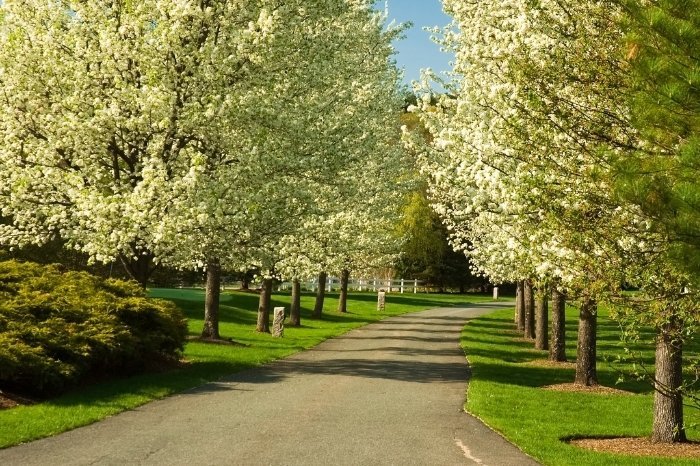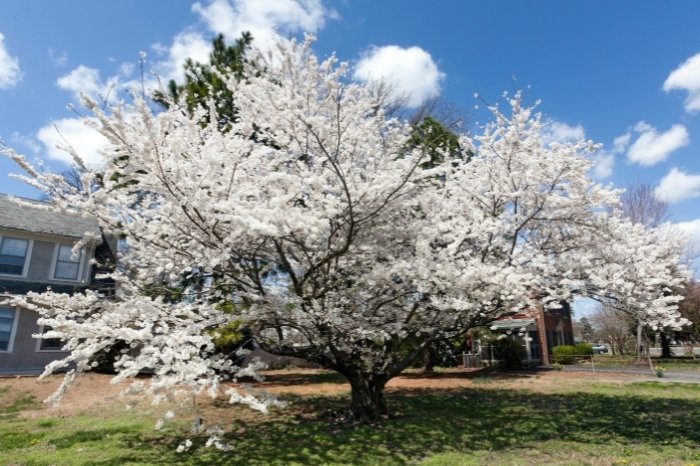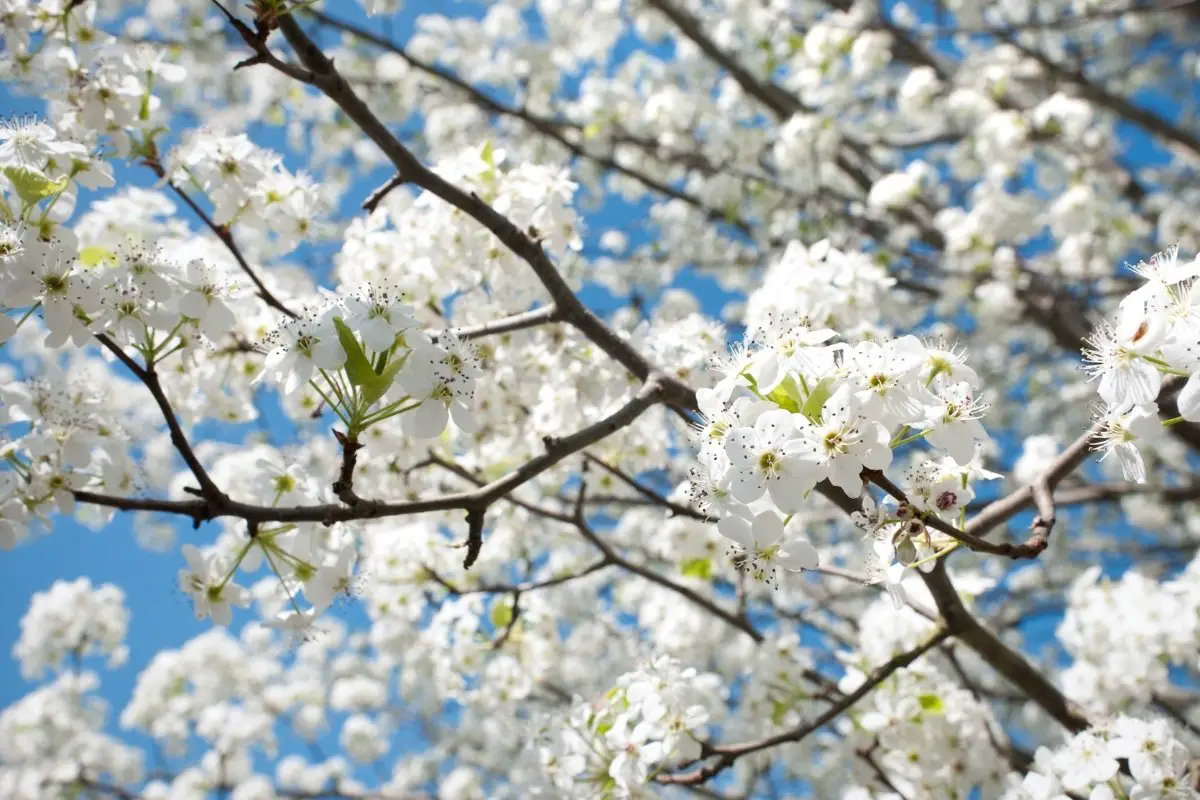Last Updated on October 15, 2024
Having plants in your garden has numerous benefits. Aside from helping purify the air that enters the home, they could also help with beautifying your outdoor space. But when it comes to planting trees in your backyard, one thing is critical, and that is to have the right tree. The Bradford pear tree lifespan is between 15 to 25 years making it one of the suitable plants to have in your home.
But how exactly should you cultivate and care for your Bradford tree? We’ll look more into that below.
Table of Contents
What Is The Bradford Tree?
Known to have funny-smelling flowers, the Bradford was first cultivated in the 1960s mainly for the pear fruit it produces at full maturity. But while they can appear attractive in the yard, they could also constitute a nuisance when not properly maintained. It is for this reason that a lot of gardeners shy away from planting them.
Popular as a landscaping solution to introduce greenery in an expanse of land, they could easily announce the beginning of spring. This you can tell by the white flowers that emerge on the tree as you get close to warmer weather.

For a plant that was intended to grow tall, it took gardeners by surprise to see that it could sprout up to a height of 50 feet above the ground. And if you make the mistake of having it close to the house, you will have to occasionally prune the branches and leaves to moderate the height.
The Bradford pear tree lifespan is one reason why they are popular and why most people avoid them in their yard. You could get a tree that could live as long as your building structure. But where it gets challenging is that it requires a lot to maintain.
For the avid gardener, it may not be much to trim and pick the flowers occasionally, but if you haven’t the time for yard maintenance, it could be a problem.
Find out How to Prune a Moringa Tree
Problems Associated With The Bradford Pear Lifespan
When you plant the seed, the chances are that you won’t be dealing with any of the challenges at the earlier stage. But as the tree ages, you surely would need to keep up with the routine care. Employing landscapers in your yard would be a reoccurring expense, and this could take the fun out of planting a tree at home. Some of the problems you will encounter with having the Bradford pear tree in your yard include
Wilting Leaves
This is where many owners of the tree would be taken aback. You would have to contend with wilting leaves which could occur all year round. You may not notice this early when you transplant to the field. But as they begin to mature, you would notice the leaves shed quickly. And while this is not a sign of poor planting practice, it could be that you may have used too much fertilizer.
As a matter of safety, you want to avoid using fertilizers when you get it to the field. Proper soil preparation could limit your fertilizer use. So you have to focus on sunlight and watering to care for the plant. But still, there is little you can do when it comes to preventing the shedding of leaves.
Click Here If you Want to Know How to Plant Lemon Seeds in Your Garden
High Winds
You surely can’t stop the wind from blowing. And for a tree with feeble flowers, the wind would likely distort them around the place. Whether you have them at the side of the house or the back, you surely will have a lot of flower picking to do. And it could get pretty messy after days of heavy wind and rain.
If you have the resources to employ a gardener weekly in your yard, it could limit the sight of fallen leaves in the ground. But if you have to do this, it could take the fun away from having the Bradford pear in your home.
BLACK+DECKER Electric Leaf Blower, 7-Amp
Leave Discoloration
You will also at intervals notice that the leaves change color. Leaves turning brown could be a sign that you planted at the wrong season. For most plants, it doesn’t matter if you plant them in spring or early summer.
But for Bradford, you want to ensure that you do this as soon as spring sets. This will ensure that you don’t have to do too much water in the summer heat, which could weaken the root development and kills the tree before it reaches maturity.
On the other hand, yellowing of the leaves may be a sign that there is a problem with the soil. Not enough nutrients or too much could result in discoloration of the leaves. carrying out a soil test is ideal to monitor the nutrient level and balance it out accordingly. Another thing you can try is composting to ensure that it gets a regular nutrient supply and prevent discoloration of the leaves.
Check out What to Do with Lavander Flowers
Bradford Pear Tree Life Span
One of the good sides to the Bradford is that it lasts longer than many other yard trees. When properly cultivated and maintained, it could stay up to 25 years. But for most owners, may have to cut it down to make room for other yard upgrades.
But in public places, you would have to look out for the barks as they begin to age. Weakness of the tree structure is common in the later years of the plant’s lifespan. And if this is the case, you may want to cut it down.

If you have more than one tree, you surely want to have them spaced properly. Their umbrella leaves could collide at maturity and would encourage leaves to drop on the floor. You will also have to be on the lookout for insects such as ants and bugs that creep around the tree. But since they are not sited close to the house, you shouldn’t worry about this.
How Long Do Bradford Pear Trees Live Final Note
Generally, having trees in the yard could have its benefits so you want to ensure that you choose the right ones. remember to take note of the maintenance requirements and also do well to cite them properly in your yard.

Barbara is an environmental activist and sustainability advocate who loves living green and sustainable. She firmly believes in reducing her carbon footprint and has been making great strides towards achieving this goal. Barbara is a vegan and avid recycler and has been actively involved in community gardens and other green initiatives. She is passionate about spreading awareness about the importance of living in a sustainable and eco-friendly manner. Barbara is always looking for ways to make a difference in her community and beyond. She is a huge advocate for preserving nature and the planet for future generations.


